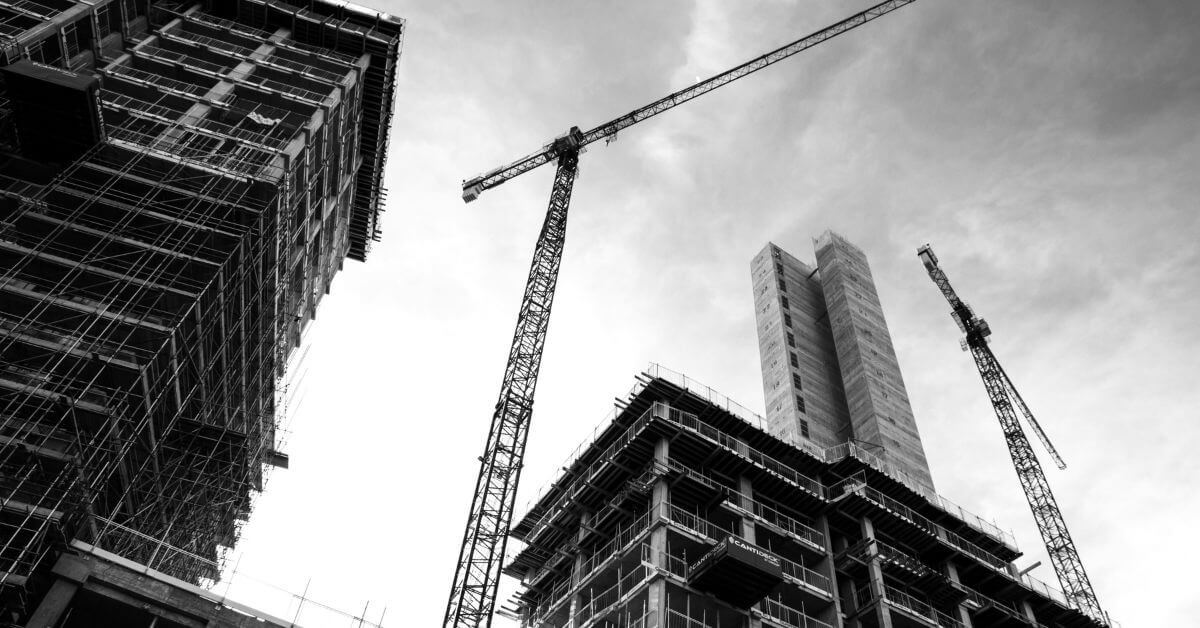When looking at a city skyline, it’s easy to be awed by the towering skyscrapers, intricate architecture and sheer splendour of urban design. Similarly, a well-produced techno track can leave listeners in awe, their feet moving to the rhythm and their souls resonating with the sound. But how do you construct such a masterpiece?
The connection to architecture and house building works well here in my opinion, as the frequency ranges and parts of a techno tune may likewise be separated into different segments to build on. If you don’t know the typical frequency ranges, check out this article by Mastering the mix.
To complete a techno track, a foundation, structure, and embellishments are required, just as they are when building a house. If the universe of techno is a city, each track is a structure, and every element, from the bassline to the ear candy, is an important brick or beam in its construction. Here’s a step-by-step guide for creating sophisticated techno track.
The foundation: the low-end
Just like a building needs a strong foundation, a techno track requires a robust low end. This is the part that gets the audience moving, gets the heart pumping and sets the tone for everything else. The low end usually consists of the kick and bassline.
Kick:
The kick is like the foundation stone of a building. It provides the basic 4/4 rhythm and the drive of the track. When it comes to sound selection, I can only say that there is a reason why 909 samples are used almost exclusively in techno: because they work. Make your life easy and use 909 samples for the sake of simplicity to give your track a good foundation. If you want to know more about how to create the perfect kick drums, have a look here.
In addition to the kick, a good low-end techno track needs other elements which, together with the kick, make up the danceable groove. Very often the so-called techno rumble is used for this. There are already a number of tutorials on the reverb rumble technique on the net, which is why I won’t go into it any further here (especially as I have the feeling that the techno rumble is slowly becoming obsolete).
Bassline:
As everywhere in techno production, there are no rules here. In principle, any kind of sound can be used for the bassline as long as it has low frequency content. Filtered 808 or 909 toms are often used for this, as they are very suitable, but conventional synths can also be used excellently if you process the sound so that it has a bit of punch and drive.
In order to create a danceable groove and not clash with the kick, you should pay particular attention to filling the intervals between the 4/4 kick beats. In my experience, 16t notes, which you can generate in Ableton with a Maxforlive sequencer, for example, are particularly suitable for this.
Designing the theme: lead, riff and theme
With the basic foundation of kick and bass, you can now build the “walls and floors”.
Lead or riff:
This is the memorable hook or motif of the track – in techno, the motif can be a simple tone or a complex synth riff. The main thing is that it conveys a certain mood and doesn’t sound boring too quickly in the repetitive techno scheme. You can achieve this, for example, by adding space to the theme with reverb and delay and by using parameter modulations to create slight changes that keep the loop exciting. It can also be helpful to keep an eye out for unusual sounds in order to stand out from the crowd and achieve a recognisable value.
Vibe:
Just like light can change the mood of a room, the theme gives a track mood. As mentioned earlier, reverb and delay give the theme space and can therefore have a massive influence on the mood.
Structure: Drums and percussion
Drums and percussion are of course a must for a techno track and round off the track in the high frequency range.
Drums:
These not only add the essential rhythm and groove to your track, but also offer you the opportunity to emphasise the different parts of the track by influencing the energy level with the drums.
Here, too, it’s a good idea to keep it simple and stick with 909 sounds. You can now create suitable patterns for each element and set the drums according to the energy level of the track. Classic drum elements that should not be missing in a techno track are:
Offbeat hi-hat, 16th rolling hat, ride, open hi-hat, clap, tom and rimshot
My tip for drums is to build up your own library of these classic drum loops. Try out a few drum patterns and sounds and simply resample them. This way you can build up a small repertoire of classic drum patterns that you can load directly into every new project. This way you don’t have to reprogram the same sounds every time.
Percussion:
Think of these as architectural details. Percussive elements can range from bongo beats to the shimmer of a triangle. They add texture and nuance to your track, filling in gaps and adding flair. They complement the rhythmic drums and round out the percussive high frequencies.
Creation of ambience: Filling the sonic spaces
As mentioned above, ambience plays an important role in techno tracks. Not only should the lead theme have a certain spaciousness, but to make your track really impactful and give it a natural feel, it should create a consistent atmosphere. Think of it as the backdrop against which the musical elements unfold – a canvas of sorts that supports and enhances your art.
Why ambience is important:
Just as the faint sounds of standing still or distant murmurs of a city add vibrancy to an otherwise quiet nightlife, ambience fills in the sonic gaps in your track. Without it, your music might seem sparse or disjointed. With it, you provide a consistent atmosphere that the listener is immersed in.
Type of ambient noise:
These sounds are usually subtle, present in the background and may not be consciously recognised by the listener. They could be continuous drones, white noise, rain sounds, vinyl pops or even distant echoes. Their role is not to stand out, but to provide a cohesive glue that binds the track together.
Texture as a sonic signature:
Textures are complex layers or grains of sound that add depth and character. It’s like the brushstrokes in a painting or the fabric in clothing. In techno, textures could come from a variety of sources – the subtle flutter in a synthesised pad, the grain of a distorted sample or the crunch of a granulated sound.
Frequency spectrum and depth: Atmosphere and texture fulfil two purposes. They not only contribute to the mood, but also fill out the frequency spectrum.
The finishing touches: ear candy and extras
No building is complete without its finishing touches – those details that make it stand out.
Ear candy:
These are the subtle elements – such as a fleeting sound effect or a short complementary melody – that may not be at the centre of the track, but add a layer of sophistication and surprise. They create variety and steer the listener away from the repetitive loop.
Effects & transitions:
Just like a beautiful door or window adds character to a building, effects like reverb, delay and transition sweeps can refine your track and give it a polished feel. Similar to drums, properly placed effects can support the arrangement of the track by adding accents at certain points, such as breaks or drops.
Conclusion
Producing a techno track is like constructing a building. It requires planning, a clear vision and attention to detail. With the right foundation and carefully selected elements, you can create a track that stands out in the vast urban landscape of techno music and leaves an indelible impression on listeners.
If you approach the production process in a structured way right from the start, you can use this house-building metaphor to build a perfect track step by step. If you orientate yourself on the frequency spectrum and fill it with the elements described above, you are already on the right track. As far as the sound selection is concerned, it is of course a matter of taste and should be chosen individually. However, you can never go wrong with the 909 drum sounds in techno and you can use them without hesitation.







